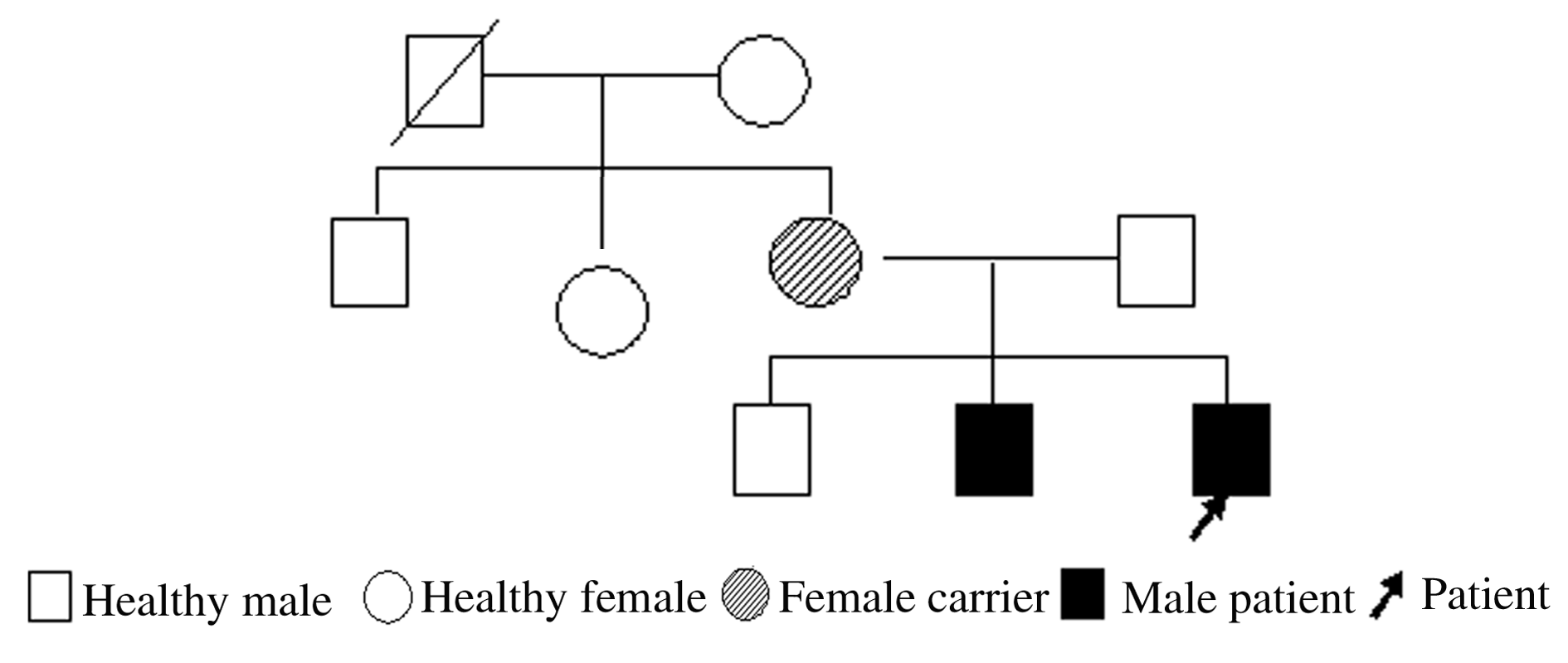| 1 |
NYKAMP K, ANDERSON M, POWERS M, et al. Sherloc: a comprehensive refinement of the ACMG-AMP variant classification criteria[J]. Genet Med, 2017, 19(10): 1105-1117.
|
| 2 |
SATO M. Early origin and evolution of the angelman syndrome ubiquitin ligase gene Ube3a[J]. Front Cell Neurosci, 2017, 11: 62.
|
| 3 |
HORVÁTH E, HORVÁTH Z, ISASZEGI D, et al. Early detection of Angelman syndrome resulting from de novo paternal isodisomic 15q UPD and review of comparable cases[J]. Mol Cytogenet, 2013, 6(1): 35.
|
| 4 |
BRAMSWIG N C, KARIN B, NATALIE B, et al. Angelman syndrome-affected individual with a numerically normal karyotype and Isodisomic paternal uniparental disomy of chromosome 15 due to maternal robertsonian translocation (14;15) by monosomy rescue[J]. Cytogenet Genome Res, 2018.DOI:10.1159/000490838 .
doi: 10.1159/000490838
|
| 5 |
刘小丹, 赵建慧, 侯 梅, 等. UBE3A基因突变型Angelman综合征一例并文献复习[J]. 中国优生与遗传杂志, 2015,23(9): 90-92.
|
| 6 |
SADIKOVIC B, FERNANDES P, ZHANG V W, et al. Mutation update for UBE3A variants in Angelman syndrome[J]. Hum Mutat, 2014, 35(12): 1407-1417.
|
| 7 |
BUITING K, WILLIAMS C, HORSTHEMKE B. Angelman syndrome-insights into a rare neurogenetic disorder[J]. Nat Rev Neurol, 2016, 12(10): 584-593.
|
| 8 |
VALENTE K D, VARELA M C, KOIFFMANN C P, et al. Angelman syndrome caused by deletion: a genotype-phenotype correlation determined by breakpoint[J]. Epilepsy Res, 2013, 105(1/2): 234-239.
|
| 9 |
徐慧慧, 季 星, 徐 燕, 等. 两例携带UBE3A新突变的Angelman综合征患者的临床表型及遗传学分析[J]. 中华医学遗传学杂志, 2017,34(6): 826-830.
|
| 10 |
MERTZ L G, THAULOV P, TRILLINGSGAARD A, et al. Neurodevelopmental outcome in Angelman syndrome: genotype-phenotype correlations[J]. Res Dev Disabil, 2014, 35(7): 1742-1747.
|
| 11 |
P M, H W, A M, et al. Mutation analysis of UBE3A in Angelman syndrome patients.[J]. Am J Hum Genet, 1998,62(6): 1353-1360.
|
| 12 |
LEE S Y, RAMIREZ J, FRANCO M, et al. Ube3a, the E3 ubiquitin ligase causing Angelman syndrome and linked to autism, regulates protein homeostasis through the proteasomal shuttle Rpn10[J]. Cell Mol Life Sci, 2014, 71(14): 2747-2758.
|
| 13 |
沈金梅, 周渊峰, 杜晓南, 等. 儿童Angelman综合征103例临床分析[J]. 中华实用儿科临床杂志, 2019, 34(12): 911-914.
|
| 14 |
孔令宇. Angelman综合征脑电图特点的研究进展[J]. 国际儿科学杂志, 2017, 44(11): 780-782.
|
| 15 |
杨欣英, 邹丽萍, 宋 昉, 等. Angelman综合征的临床和脑电图特征[J]. 中华儿科杂志, 2010, 48(10): 783-786.
|
| 16 |
徐亚飞, 李沁晏. 儿童Angelman综合征5例脑电图特征与临床分析[J]. 湘南学院学报(医学版), 2019, 21(2): 19-22.
|
| 17 |
PEARSON E, WILDE L, HEALD M, et al. Communication in Angelman syndrome: a scoping review[J]. Dev Med Child Neurol, 2019, 61(11): 1266-1274.
|
| 18 |
EGAWA K, KITAGAWA K, INOUE K, et al. Decreased tonic inhibition in cerebellar granule cells causes motor dysfunction in a mouse model of Angelman syndrome[J]. Sci Transl Med, 2012,4(163): 157-163.
|
| 19 |
AGAR G, OLIVER C, TRICKETT J, et al. Sleep disorders in children with Angelman and Smith-Magenis syndromes: The assessment of potential causes of disrupted settling and night time waking[J]. Res Dev Disabil, 2020,97: 103555.
|
 )
)





